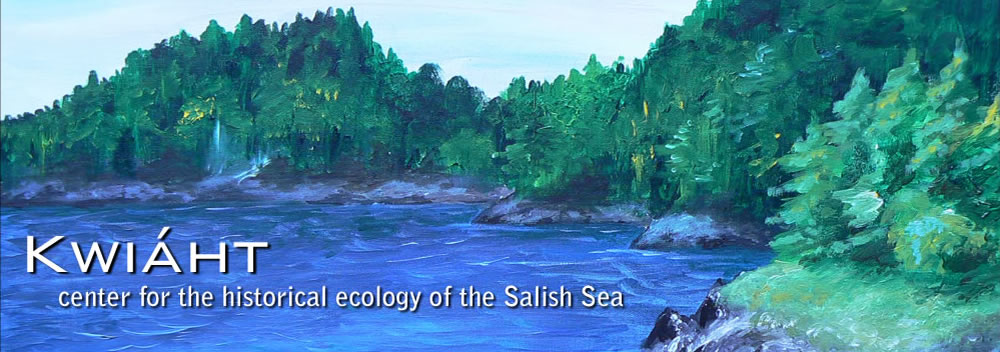Sustainable Local Food Production
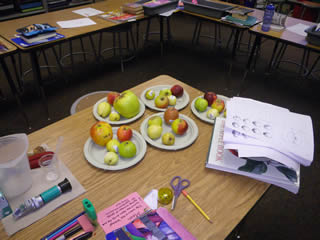
Apple tasting and testing for local students
Interest in local food production has been growing in the San Juan Islands, and Kwiáht is investigating locally adapted crop varieties, as well as ways of measuring the impacts of expanded agriculture land use and changing food production methods on terrestrial food webs that support bats, birds, and small mammals.
Coast Salish villages in the islands appear to have been net exporters of food, not only of salmon from reef-nets, but also long-lined halibut, smoked oysters and clams, and camas products, as well as dog-hair yarns from domestic dog flocks. European settlers were also net food exporters, from the 1880s when the first commercial fruit orchards were planted in the San Juan Islands, through the expansion of island salmon fishing and canneries just before the First World War, to the islands' role as a regional hub for growing and canning peas, which ended only in the 1950s. Today, hundreds of acres of abandoned orchards are all that remains of a dynamic, regionally significant food industry.
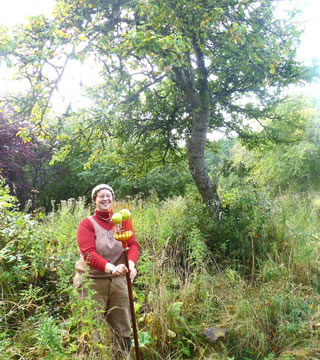
Sampling the historical Cayou orchard
With support from the Orcas Island Community Foundation, the Lopez Thrift Shop, the San Juan Island Community Founcation, the Mills Davis Foundation, and WSDA's Specialty Crop Block Grant program, Kwiáht and island students began sampling and testing apples, pears, plums and cherries from historic orchards, and roadside seedling trees, screening for flavor, nutritional value, and best uses (fresh eating, baking, sauces, cider and vinegar). Since 2024 we have been working with Washington State Universities MyFruitTree project to use genetic fingerprinting to identify heritage varieties and the parentage of unique seedling varieties, including hybrids between native Malus fusca and heritage apple varieties. Over 200 apple trees, historical relics and novel seedlings, have been tested and catalogued thus far. Several historically documented varieties have been rescued, and a number of seedlings have shown promise. All of these trees have survived the local climate without care—and some produce fruit with unusual flavors, or turn very sweet when cooked so that no sugar need be added.
You can help us document fruit tree diversity: send us photos of your fruit, its location, and the variety (if known). Or invite us to visit and map your trees. You can also see our growing map of fruit trees and add your orchard. Together with the Lopez and Orcas Museums and the San Juan Island Grange we hold apple tastings in the fall, and scionwood exchanges and grafting workshops in the spring each year. Scionwood is freely available to local farmers and specialty-food producers.
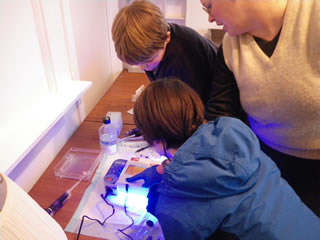
Running a gel with apple DNA
Combined with county agricultural tax incentives, interest in local food has stimulated an increase in farmed acreage in the islands. While Kwiáht has concluded that revived use of historical farmland can benefit terrestrial ecosystems including wetlands, most new farms are located in previously unfarmed wetlands, or involve converting unplowed pasture into plowed fields and cropland. We are refining the use of invertebrate diversity (insects, soil arthropods, freshwater zooplankton, mollusks) as measures of change in food webs, with a view to developing protocols that farmers and their children can use themselves.
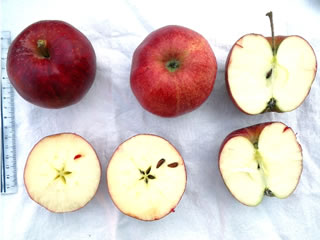
Apple Survey record 1621
At the same time, Kwiáht has responded to island farmers' concerns about GMO seed by developing, with apprentice Nia Bartolucci, genetic screening tools that can reliably be used by trained local students.
See Also: Heritage Fruit Tree Project
